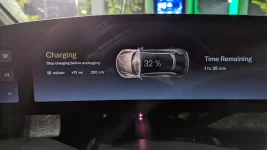Choose carefully. Get the CORRECT Hubbell. Too many house fires already. If you search the EV forums, only two NEMA 14-50s are recommended. The Hubbell hbl 9450A and the Bryant 9450FR. Hubbell makes Bryant. They are not cheap. $50-90. There is a $25 Hubbell that is slightly better than the HD Leviton $12 pure crap. This Hubbell Rr45fw, but is not recommended for long term EV charging.
The huge issue the NEC is addressing is that 95% of the 14-50s are NOT rated for continuous duty. Dryers and stoves are not continuous duty. Who has an oven on full blast 40 amps, for 7 hours? Simply put, a cheap, HD dryer grade receptacle used long term for EV will melt. I have seen reports where the distergrating receptacle took out the breaker and panel. Continuous duty is the reason our breakers and conductors have an additional 25% safety factor.
The Hubbell and Bryant recommended above are old school. Twice as deep as Leviton, twice as heavy, made for continuous duty, and proper big lugs for proper conductor torquing. Thick copper and BAKELITE. Remember BAKELITE? Guess why? It does not burn.
And
@DeaneG , sorry to report the Cooper and Pass & Seymour are are only slightly less bad than Leviton.

